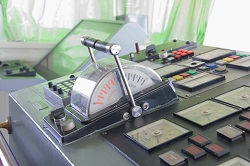New onboard bridge designs to improve safety at sea
Drawing directly from the experience of seafarers, cross-discipline collaboration, and using innovative modelling and simulation techniques, the EU-funded CASCADE project has developed its Adaptive Bridge System that recognises, prevents, and recovers from human error by improving the interaction between a ship’s bridge crew and electronic equipment. There has been a marked increase in the number of maritime accidents in and around EU waters, with an estimated 80 % of collisions and vessel groundings taking place due to a failure of bridge systems and / or their usage by crew members. The new system will improve onboard information sharing and as a result, overall maritime safety. The project utilised a Cooperative System Design Methodology, a holistic perspective which allowed for the detection and solving of potential problems or conflicts (such as human error), inconsistencies and redundancies (e.g. of information presented on bridge computer screens) during the design phase. One of the key elements of the new design methodology is a touch screen ‘Shared Display’ that is intended to aid communication and cooperation amongst the bridge crew. To ensure flexibility, the screen is completely customisable and shows multiple sources of information in a configuration best suited for any particular situation. Particular functions of the new ‘Shared Display’ include the ability to graphically annotate maps and charts, leave notes for other crew members, and compile electronic checklists. The CASCADE console was integrated with tools used by ship pilots in Portable Pilot Units (PPUs). Firstly, the project developed a protocol to share pilotage routes between the PPU and the ship’s electronic charts. Secondly, a link was established between the PPU and the bridge screens to allow the mirroring of information from the PPU screen, enabling crew members to see extra information normally only available to the ship’s pilot. All of these new tools were tested by the project on both a physical ship simulator (used for training purposes) and a Virtual Simulation Platform (a software-based simulation of a ship’s bridge), focusing on a number of situations encountered daily by seafarers, such as navigating traffic on busy sea lanes. This allows for the possibility of testing new bridge designs at the earliest stages of development and ensuring a maximum level of interoperability between the various bridge systems and consoles. Although the project ended in December 2015, the development of CASCADE’s Adaptive Bridge System, and its emphasis on simulating human-machine interaction at the design phase as a means to minimise the risks posed by human error, is an important step forward in improving overall maritime transport safety. For further information please see: CASCADE project website(opens in new window)
Countries
Germany



